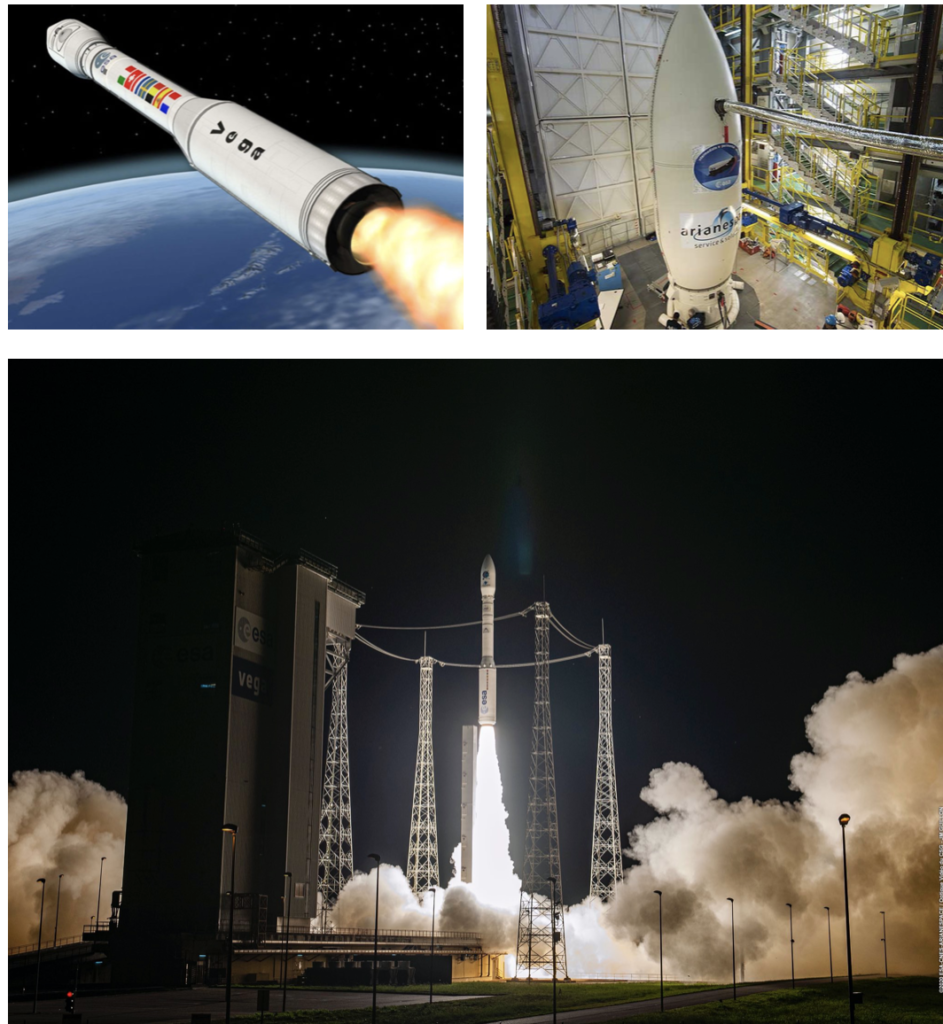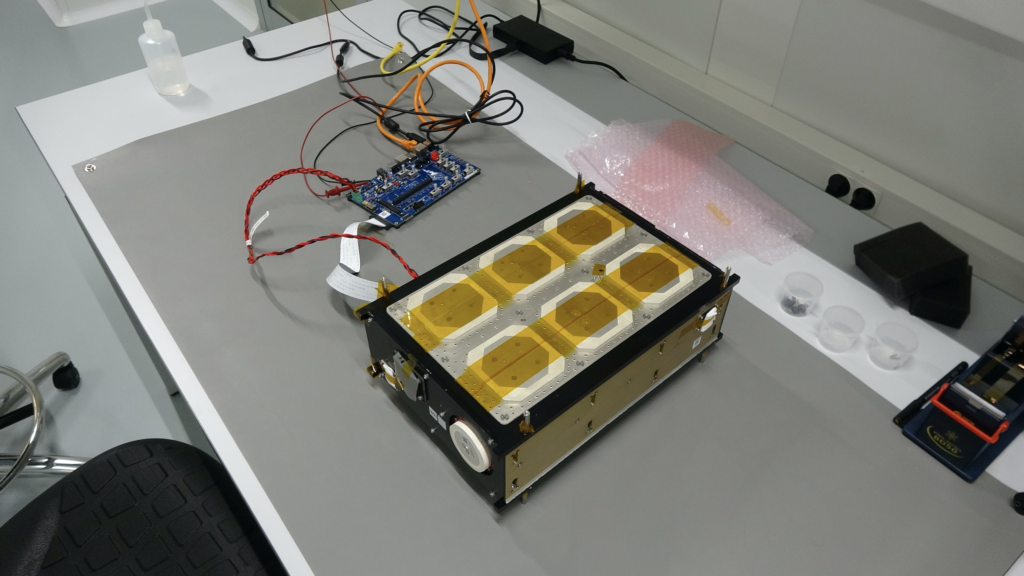THE FIRST MONEGASQUE NANOSATELLITE IN ORBIT
A small step for man, but a big step for the Principality. Monaco has finally found its rightful place in the very exclusive club of countries aiming to “conquer space”.
And despite very high ambitions, the size of the first Monegasque nanosatellite is proportional to the scale of the third smallest country in the world. It measures only ten centimetres wide, twenty centimetres long and thirty centimetres high.
The OSM-1 CICERO nanosatellite is a technological feat and the brainchild of Francesco Bongiovanni, founder and director of Orbital Solutions Monaco and its teams of scientists. Placed in an orbit 540 kilometres from Earth, it is able to complete a full revolution around the globe in just 90 minutes. This is equivalent to 28,000 kilometres per hour ; an absolute world record.
LAUNCH POSTPONED
Yann Gouy is an engineer specialising in embedded computers. Today, he has found his smile again but he has had his share of cold sweats due to the many postponed launches, first following the Covid 19 pandemic and then because of dangerous weather conditions.The teams of scientists faced no less than four consecutive postponements between March 18 and June 28, 2020. A period of 3 months that may seem relatively short in one’s life span, but which is considerable compared to the age of the company. Orbital Solutions was created only one year ago via Monaco Tech, a hotbed of high-tech start ups. It was not until September 2, 2020 at 22: 51 local time (3: 51 Monaco time on September 3) that the nanosatellite reached its orbit in space. It was successfully launched from the Guiana Space Centre in Kourou (French Guiana) by the Vega VV16 rocket, property of Arianespace.
REDUCED COST

The praise that the Principality of Monaco has piled on Francesco Bongiovanni is first of all, for the reduction in costs. The budget allocated by Monegasque investors for the study of weather conditions is far smaller than those that would have been granted in the past to organisations such as NASA, ESA or the Thales Group. Here, these cutting edge technologies allow only three engineers to build a nanosatellite, with a budget of 1 million euros in a small locale of 300 square metres, near the Port of Fontvieille.
With a smile on his face, Professor Bongiovanni admits to having had recourse to a certain amount of resourcefulness. Some components are bought inexpensively in Europe and the USA and are then subjected to some ” patching ” and upgrading. We are worlds away from penny-wise and pound-foolish economies, when considering that in the past, a satellite could cost up to 700 million euros, excluding the launch into space.
This economic policy requires engineers to show a certain practical sense and to reevaluate their capacities. By dint of racking their brains, the most clever idea they came up with was to allow the nanosatellite to collect information already gathered by older and larger satellites. However, this information will not only benefit Monaco but also the United States which, after having supplied the US Weather Agency with data, will sell its information on the climate to parts of Europe, India and Singapore.
COLLECTING WEATHER/CLIMATE DATA
Although 90 % of the data collected today comes from very large weather satellites owned by meteorological agencies, the miniature satellites allow a wider coverage of the Earth.
“Right now, there are parts of the globe with very little coverage such as the oceans, Africa, Asia, and even some countries in Europe. Now, if we can obtain much cheaper systems, we can manage to cover a larger area of the Earth and therefore provide better climatic forecasting”.
“The climate data market is worth $ 13 billion, and it is a booming market because some areas of the earth are poorly covered, due to the historically high cost of this technology. Today, it is possible to have more global, more complete data that can help in forecasting. All weather data are collected from different censors (radio occultations, infra-red radiation, microwave…) and the more data from different censors, the larger geographical areas are covered, allowing for better forecasts. Imagine knowing exactly where a hurricane is heading or where there will be rain at a precise time etc. The weather concerns us all, every day. All activities in the world depend on the weather. If you have outdoor facilities, you are not going to have clients if it is raining. This is something very, very important. There is a definite impact. What’s more, weather events are more and more violent and closer to us, and it is with better data that we can improve our chances, or prevent such situations “.
STRUCTURE AND DEVELOPMENT OF OSM-1 CICERO

Yann Gouy likes to pretend that he attends only to those parts of the computer “that are invisible”. “I did all the software tests on the satellite…the embedded software was already in place, but all the different modules had to be tested separately and then together, to make sure everything was working properly “.
Once the satellite is launched, it becomes difficult for engineers to make modifications. Even if some changes are possible when the craft is in orbit, this can lead to problems that can cause a chain reaction. “It is preferable to have everything working properly before the launch “.
“Assembly and testing took about 3 months. The first stage consisted of an exclusively mechanical part, together with some assemblies of the structure and components. There is a cold assembly phase, called “Dry Build” and a hot assembly phase, known as “White Build”.
The nanosatellite is then pushed to the limit in order to check its resistance. It is made to go through rapid ‘hot/cold’ cycles, very similar to the thermal conditions it will encounter once in weightlessness.
“On this nanosatellite, there was some difficulty with a solar panel that proved fragile and did not withstand thermal changes. It is very difficult to revert to the hot assembly phase that resulted in the bonding of the structure”.

“The satellites are composed of a platform that serves as a mechanical structure, with an on-board computer and numerous components that calculate its position. Some sensors can change the altitude of the satellite, and provided it is relatively close to Earth, the so-called “magnetic bars” allow for movement, thanks to the magnetic fields. The distance to Earth plays an important role in the maneuverability of the craft. Then, there is the payload, which makes it possible to take measurements of the Earth’s atmosphere. This is known as radio occultation. The satellite picks up other satellites’ signals thanks to a powerful antenna and calculates the extent of cloud cover, atmospheric composition and rainfall levels when the signals have passed through space. The information is very different from that of a satellite in a stationary position, above a fixed point. The combination of a so-called ‘traditional’ satellite and a nanosatellite such as this one allows for additional and above all, more accurate weather forecasts “.
COMMITTED TO THE ENVIRONMENT
Taking into account all the debris, as well as operational satellites, the European Space Agency estimates that there are more than 34,000 objects larger than 10 cm in orbit, many of which are thought to be technological waste from previous space launches.
Concerned about the environment that surrounds the Earth, Orbital Solutions Monaco has thought of everything, including the potential risk of pollution that its miniature model may pose in space :
“The satellite has an expected lifespan of about 3 to 5 years. It will automatically self – destruct and disintegrate into small pieces so as not to contribute to the pollution of the solar system. Five years is five times less than the time limit imposed by the United Nations “.
For the CEO, this new approach is an important plus factor which is perfectly viable, profitable and which corresponds to this willingness to persevere in the protection of the environment.

NEW SPACE
New aerospace technologies are resolutely at odds with past ideals. Gone are the days when Americans and Russians spied on each other to build the most innovative technology, keeping themselves to themselves. This new era is conducive to the exchange of data and knowledge.
Orbital Solutions is composed of only one embedded electronics engineer, one thermal mechanics engineer, and one CEO, who is also its founder. But in this new high-tech sector, it is customary today to outsource some tasks to small companies abroad and to forge a system of partnerships and collaboration.
“New Space is truly a new sector that has just sprung up and which requires collaboration. Generally, it is made up of small companies, each specialising in their field of competence, because no one can have expertise in everything “.
The CEO of Orbital Solutions has remarked that : “Today we talk about democratisation of space. This is a radical and ideal change for Monaco, because it is an activity with a lot of prestige and high added value, in a somewhat restricted place “.
Regarding future projects, the CEO of Orbital Solutions is optimistic but prefers to remain discreet. Even though Monaco has made big strides to catch up in terms of space conquest, isn’t there a saying that goes… “heaven can wait” ?

